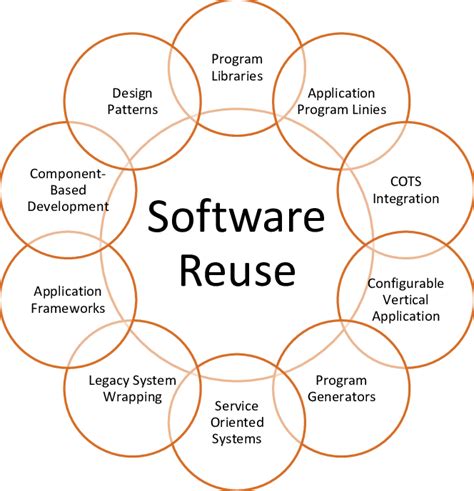Introduction to Design Reuse
Design reuse is a crucial strategy in PCB design that involves leveraging existing designs, components, and intellectual property (IP) to create new products more efficiently. By re-applying previously designed boards, engineers can save time, reduce costs, and improve the overall quality of their designs. This article explores the various methodologies and best practices associated with design reuse, focusing on how to effectively re-apply previous boards in new projects.
Benefits of Design Reuse
Implementing design reuse practices offers several significant benefits:
- Time Savings: Reusing existing designs eliminates the need to start from scratch, reducing the time required for schematic capture, layout, and verification.
- Cost Reduction: By leveraging previously designed and validated components, engineers can minimize the costs associated with new part selection, testing, and manufacturing setup.
- Improved Quality: Reusing proven designs reduces the risk of errors and ensures a higher level of reliability in the final product.
- Faster Time-to-Market: With shorter design cycles, companies can bring their products to market more quickly, gaining a competitive edge.

Key Elements of Design Reuse
Successful design reuse relies on several key elements:
1. Design Library Management
Maintaining a well-organized library of reusable designs is essential for effective design reuse. This library should include:
- Schematic symbols and footprints
- Proven subcircuits and modules
- Tested and validated IP blocks
- Design templates and reference designs
A centralized library management system allows engineers to easily search, access, and update reusable components, ensuring consistency and version control across projects.
2. Standardization and Modularization
Standardizing design elements and creating modular blocks facilitates reuse across multiple projects. By defining common interfaces, form factors, and design guidelines, engineers can create interchangeable components that can be easily integrated into new designs.
| Design Element | Standardization Approach |
|---|---|
| Connectors | Define a set of standard connectors for power, data, and control signals |
| Power Supplies | Create modular power supply blocks with standardized input/output specifications |
| Communication Interfaces | Use industry-standard protocols (e.g., I2C, SPI, UART) and define common pin assignments |
3. Documentation and Metadata
Comprehensive documentation and metadata are crucial for effective design reuse. Each reusable component should include:
- Detailed specifications and datasheets
- Design intent and application notes
- Schematic and layout files
- Simulation models and test benches
- Revision history and version control information
Well-documented designs enable engineers to quickly understand the functionality, limitations, and integration requirements of reusable components, reducing the learning curve and minimizing errors.

Design Reuse Methodologies
Several methodologies can be employed to facilitate design reuse:
1. Parameterized Design
Parameterized design involves creating flexible, customizable components that can be easily adapted to new requirements. By defining key parameters (e.g., component values, pin assignments, form factors), engineers can create a single design that can be reused across multiple projects with minimal modifications.
Example: A parameterized power supply module that allows engineers to specify input voltage range, output voltage, and current rating.
2. Platform-Based Design
Platform-based design focuses on creating a common hardware and software platform that can be used as a foundation for multiple products. By defining a set of core components, interfaces, and
protocols, engineers can develop a reusable platform that can be customized and extended for specific applications.
Example: A microcontroller-based platform with standardized peripherals, communication interfaces, and software libraries, enabling rapid development of new products within the same family.
3. IP-Based Design
IP-based design involves leveraging pre-designed and pre-verified intellectual property blocks, such as processor cores, communication interfaces, and analog functions. By integrating these IP blocks into new designs, engineers can save time and reduce the risk of errors.
Example: Using a proven USB interface IP block in a new design, eliminating the need to design and validate the USB functionality from scratch.

Best Practices for Re-Applying Previous Boards
To effectively re-apply previous boards in new designs, consider the following best practices:
1. Assess Suitability
Before reusing a previous board, assess its suitability for the new application. Consider factors such as:
- Functionality and performance requirements
- Form factor and mechanical constraints
- Manufacturing technology and component availability
- Regulatory compliance and certification requirements
2. Identify Reusable Components
Analyze the previous board design to identify components that can be reused in the new project. These may include:
- Power supply circuits
- Communication interfaces
- Analog front-ends
- Digital processing blocks
Create a list of reusable components and their associated documentation, including schematics, layouts, and datasheets.
3. Adapt and Modify
Adapt and modify the reusable components to meet the specific requirements of the new design. This may involve:
- Scaling the design to accommodate different power levels or signal ranges
- Modifying the layout to fit the new form factor or mechanical constraints
- Updating the component selections based on availability or performance needs
- Adjusting the software and firmware to support the new functionality
4. Simulate and Verify
Simulate and verify the modified design to ensure that it meets the new requirements and functions as intended. This may involve:
- Running simulations to validate the electrical and thermal performance
- Conducting signal integrity and power integrity analyses
- Performing design rule checks (DRC) and layout versus schematic (LVS) checks
- Building and testing prototypes to verify functionality and reliability
5. Document and Update
Document the modifications made to the reusable components and update the design library with the new versions. Include detailed notes on the changes made, the rationale behind them, and any limitations or considerations for future reuse.
FAQ
-
Q: What are the main challenges in implementing design reuse?
A: The main challenges include maintaining an organized design library, ensuring compatibility between reusable components, and adapting designs to new requirements while preserving functionality and reliability. -
Q: How can I ensure that reusable components are compatible with new designs?
A: Ensure compatibility by defining clear interfaces and specifications for reusable components, using standardized protocols and form factors, and thoroughly documenting the design intent and limitations. -
Q: What tools can help facilitate design reuse?
A: Tools that support design reuse include library management systems, version control software, simulation and verification tools, and design automation scripts that can adapt designs based on parameterized inputs. -
Q: How can I measure the success of my design reuse efforts?
A: Measure success by tracking metrics such as the percentage of reused components in new designs, the reduction in design cycle time, and the number of errors or design iterations avoided through reuse. -
Q: What are the long-term benefits of adopting a design reuse strategy?
A: Long-term benefits include reduced development costs, faster time-to-market, improved product quality and reliability, and the ability to leverage a growing library of proven designs across multiple projects and product lines.
Conclusion
Design reuse is a powerful strategy for accelerating PCB design and improving product quality. By adopting methodologies such as parameterized design, platform-based design, and IP-based design, and following best practices for re-applying previous boards, engineers can significantly streamline their design process and deliver more reliable products in less time.
To successfully implement design reuse, organizations must invest in robust library management systems, promote standardization and modularization, and foster a culture of collaboration and knowledge sharing. By embracing design reuse as a core strategy, companies can gain a competitive edge in today’s fast-paced electronics industry.

No responses yet